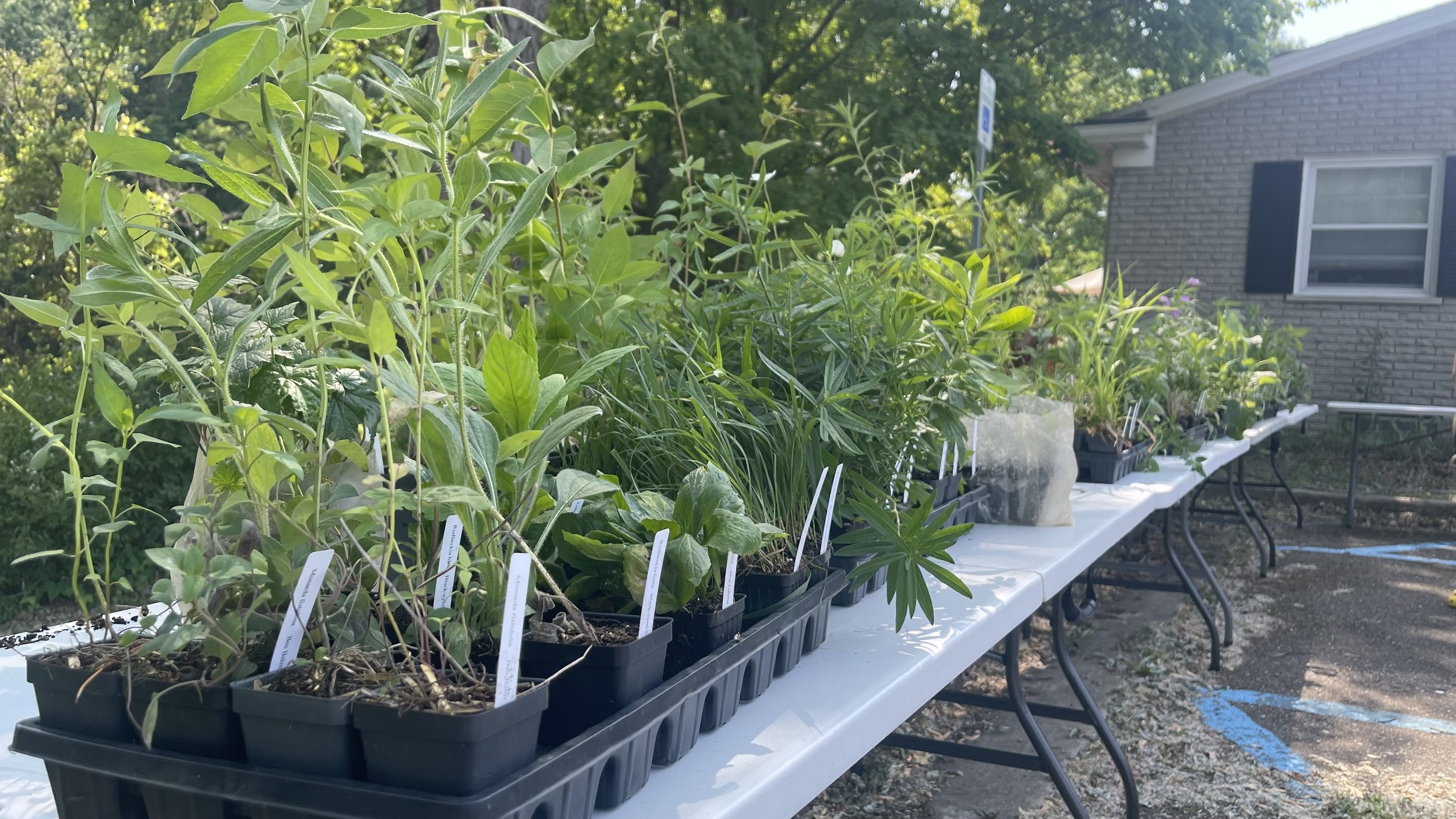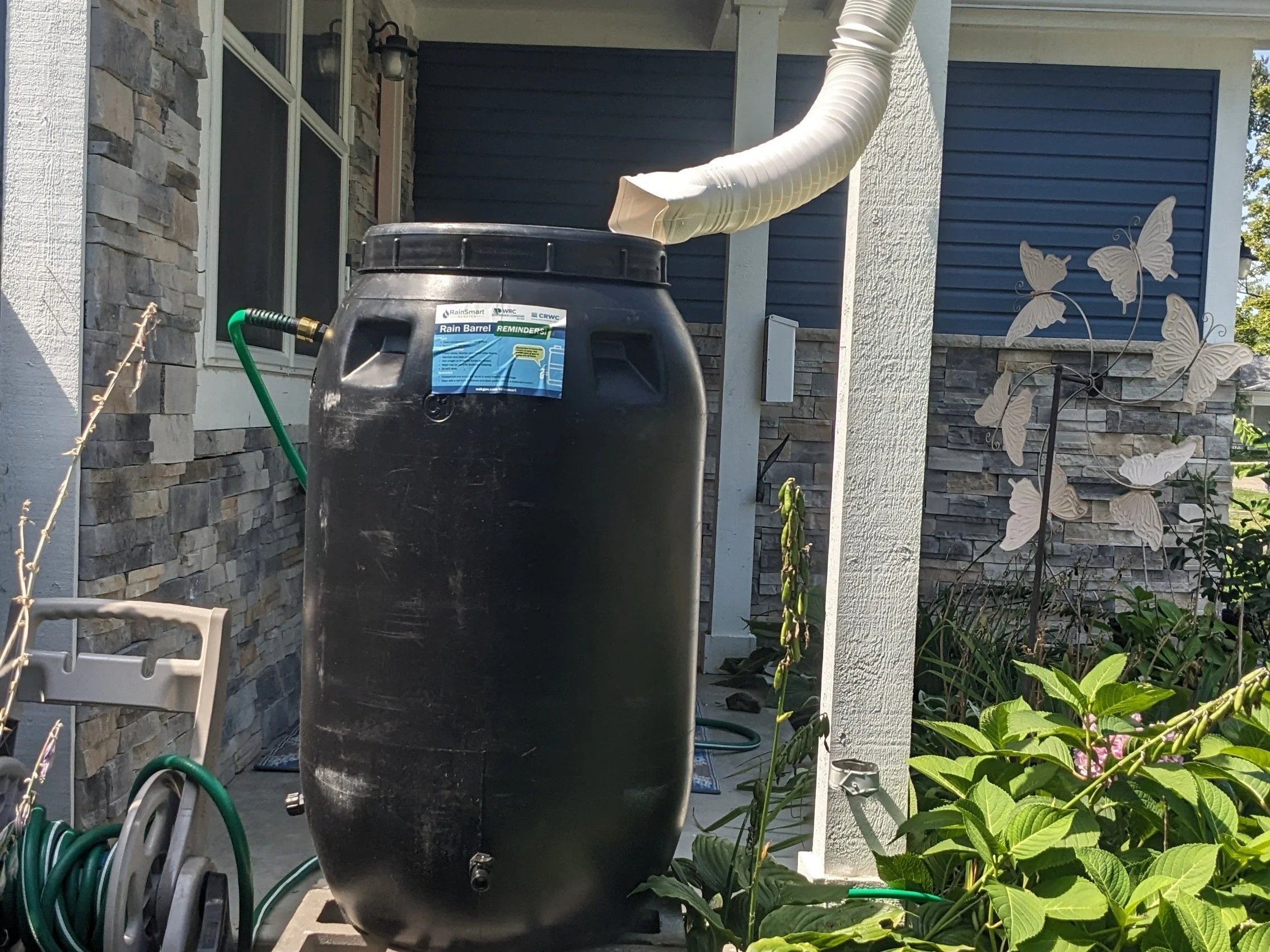
Native Plant & Rain Barrel Sale
GREEN LANDSCAPING SERVICES
To learn more about how green landscaping options like rain barrels and native plants can benefits your house, property and the environment, schedule a consultation with our Rain to Roots team. Consultations and installations will resume in Spring 2026.
CRWC is starting the initial launch of the Rain to Roots program in Center Line, Sterling Heights and Warren. These communities were selected as a result of the First National Flood Risk Assessment. If you are outside of the Center Line, Sterling Heights and Warren communities, but are within the Clinton River Watershed and have an interest in any of these programs and services, please fill out this survey.
ABOUT RAIN BARRELS
Rain barrels connect to the downspout of a house, garage, or other structure to collect and store rainwater runoff from your roof. Using a rain barrel helps reduce the amount of stormwater entering storm drains and local waterways, which helps decrease pollution, erosion, and flooding.
Rain barrels are an excellent way to conserve rainwater and reduce water bills while benefiting the environment. By collecting rainwater, you can effectively harvest nature's gift and utilize it for various household and outdoor needs. Rain barrels help reduce the demand on municipal water supplies, especially during dry seasons, by collecting and storing rainwater for later use.
When rainwater moves over impervious surfaces like rooftops and driveways, it can collect pollutants and carry them directly into local lakes, rivers, and streams. By capturing rainwater that would otherwise run off into storm drains, rain barrels mitigate the risk of flooding and prevent pollutants from entering local waterways.
ABOUT NATIVE PLANTS
Michigan’s native plants have adapted to all of Michigan’s soil types - as well as woodlands, wetlands, ponds, streams, meadows, prairies, and everything in between.
Available in a wide variety of shapes, colors, sizes, and foliage types, there are more than 600 Michigan native plants including wildflowers, grasses, ferns, trees, groundcovers, shrubs, evergreens, and vines. Some species of Michigan’s native plants have root systems that extend up to 15 feet or more underground. This characteristic not only allows the plants to be more successful at searching out water, but it also allows them to hold soil particles in place, preventing erosion and stormwater damage.
Most native species are perennial or self-seeding biennial plants. This means that they will typically re-seed themselves and continue to thrive and multiply with little human intervention. This also helps save costs by eliminating the need to buy new plants each year.
Native plants provide natural habitat, ecological enrichment, and low-maintenance landscaping, they also improve soil stability erosion control, climate resilience, and stormwater filtration.



